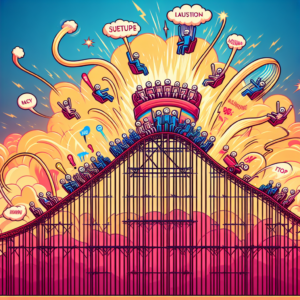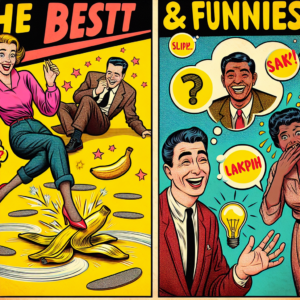Writing Comedy: A Comprehensive Guide
I. Intro: Why Write Comedy?
Comedy has an unparalleled ability to connect people, offering not just humor but also insight into the human experience. Writing comedy allows us to explore societal norms, personal quirks, and absurdities of life while providing an outlet for laughter. Comedy can be a means to cope with adversity, challenge authority, and foster connection among diverse audiences. Ultimately, the act of writing comedy is a way to celebrate life’s absurdities, turning everyday situations into moments of joy.
II. Core Components
A. Character: Quirky, Flawed, Relatable
Characters are the heart of any comedic narrative. They should be:
– Quirky: Unique traits that make them stand out; consider odd habits, unexpected talents, or unconventional views that add humor.
– Flawed: Imperfections that create opportunities for conflict and comedic scenarios; think of characters with overconfidence, lack of self-awareness, or an obsession with trivial matters.
– Relatable: Characters should resonate with the audience, drawing on shared experiences and emotions, allowing the joke to hit home.
B. Premise: Absurd, Unexpected, Grounded
The premise is the foundation of your comedy:
– Absurd: Embrace the ridiculous; scenarios that are far-fetched can generate humor by leading to unexpected outcomes.
– Unexpected: Subvert audience expectations to create surprise; twist the obvious into something humorous.
– Grounded: While absurdity is key, relate it to real-life situations to maintain audience engagement; this balance between the extraordinary and the familiar enhances comedic effect.
C. Dialogue: Witty, Snappy, Subtextual
Dialogue drives comedy forward:
– Witty: Use clever wordplay and puns; quick exchanges can heighten the humor.
– Snappy: Keep conversations brisk and punchy; avoid unnecessarily long dialogue that can dilute laughter.
– Subtextual: Layer dialogue with underlying meanings or contrasts between what is said and what is meant, creating room for humor that requires thought to appreciate.
III. Structure
A. Setup: Establish the World, Characters
Introduce your setting and key players, giving the audience context for the upcoming humor. Use vivid descriptions and situational context to ensure audiences are invested from the get-go.
B. Rising Action: Complications, Escalating Stakes
As the story progresses, introduce complications that challenge the characters or escalate the humor. Whether it’s misunderstandings, awkward situations, or escalating conflicts, the tension here is critical for comedic momentum.
C. Climax: Peak of Humor, Conflict Resolution
This is where the humor reaches its peak. The culmination of the setup and rising action results in a hilarious climax. Make sure that any conflicts introduced are resolved in a funny way, leaving the audience with a sense of satisfaction and laughter.
IV. Jokes
A. Types: Slapstick, Wordplay, Situational
– Slapstick: Physical comedy that elicits laughter from exaggerated actions or visual gags.
– Wordplay: Puns, malapropisms, and clever turns of phrase that require verbal wit.
– Situational: Humor arising from the characters’ situations or interactions, often building on absurd premises.
B. Timing: Beats, Pauses, Delivery
Timing is crucial in comedy. Master the rhythm of your jokes:
– Beats: Structure your jokes with clear beats to create anticipation.
– Pauses: Use pauses effectively for comic relief; a well-timed pause can amplify the punchline.
– Delivery: Your voice, facial expressions, and body language all contribute to the joke’s impact—practice is key.
V. Revision: Refine, Test, Rewrite
The first draft is just a starting point. Comedy often requires several rounds of refinement:
– Refine: Edit your material for clarity and comedic impact, ensuring every line serves the humor.
– Test: Share with peers or a test audience to gauge reactions; pay attention to their laughter (or lack thereof) to identify what works and what doesn’t.
– Rewrite: Don’t hesitate to make significant changes. Comedy is a fluid art form, and sometimes the funniest outcomes come from significant revisions rather than minor tweaks.
By understanding these foundational elements and practicing with a focus on character, premise, dialogue, structure, types of jokes, timing, and revision, you can craft effective and entertaining comedic narratives that resonate with your audience. Happy writing!












